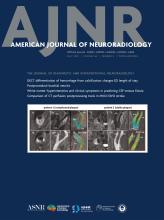This article requires a subscription to view the full text. If you have a subscription you may use the login form below to view the article. Access to this article can also be purchased.
Graphical Abstract
SUMMARY:
The inner ear contains many fissures and canals that can mimic pathology. Photon-counting CT allows greater spatial and contrast resolution of these structures over traditional energy-integrating CT detectors. Small channels containing nerves, arteries, and normal anatomy such as the cochlear cleft and cochlear and vestibular aqueducts are commonly encountered on temporal bone imaging. The improved visualization of these structures poses challenges for radiologists who are new to photon-counting CT. This article updates the existing temporal bone anatomy literature with a detailed anatomic review of the inner ear and major nerves frequently encountered when reviewing temporal bone imaging.
ABBREVIATIONS:
- EID
- energy-integrating detector
- FAF
- fissula ante fenestram
- IAC
- internal auditory canal
- PCT
- photon-counting CT
- © 2025 by American Journal of Neuroradiology













